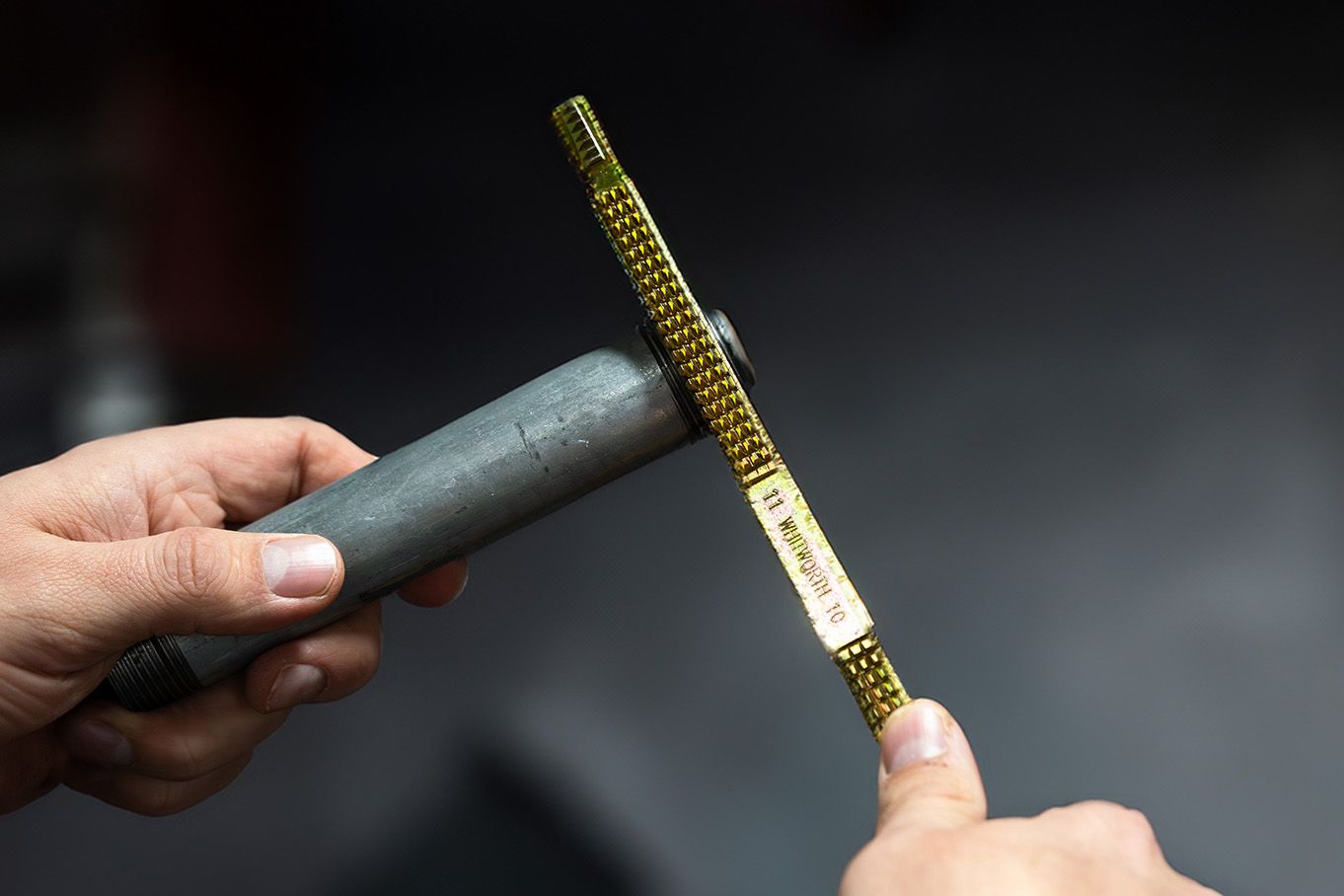
Thread file - reworking threads made easy
Depending on the application, threads can become dirty, rusted, or unusable over time, or may have damaged threads due to wear and tear. Smaller components like individual screws or nuts can be easily replaced. But what about large, expensive, or highly specialized parts?
If you're dealing with damaged threads, there are various methods you can consider for thread repair. Your choice depends on factors like the type and extent of damage, the component or material involved. We'd like to introduce you to a tool for thread repair that you might not have heard of before: the thread file. The thread file does exactly what it sounds like—it files threads. Let's explore how it works and whether the thread file is a suitable method for thread restoration.
What the Thread File Looks Like
It may appear that the thread file is specialized due to its design. However, it is an essential tool for precise work and not just for hobbyist applications. The thread file has the shape of a square rod and is covered with sharp teeth responsible for the actual filing. The tooth geometry matches common thread standards, and the spacing between the teeth is identical to the corresponding thread pitches. To maximize versatility, there are teeth with two different pitches on each side of the square.
To use a thread file, it has a smooth handle in the middle. Some files may also have a wooden handle, but using these may mean sacrificing half of the pitches. There are also sections with individual rows of teeth at the outer ends of the file for working on internal threads.
Using the Thread File
Thread files are mainly used for expensive, specialized, or hard-to-reach components. The type of damage also plays a role. Thread files are more suitable for dirt or light damage. Moreover, they can remove small irregularities, such as burrs or other remnants from the manufacturing process.
Before you can use the thread file, you need to select the correct pitch. You might already know this, and if so, you can find the right side of the thread file with the corresponding labeling. Alternatively, you can use the file itself to determine the pitch. To do this, gently press one side of the file against the thread and see if the teeth fit into the threads. Repeat this process until you find the correct spot on your thread file.
Now, move the file back and forth with light pressure, just as you would use any other file. For internal threads, press the end of the thread file against the thread and move it around following the thread inside the hole.
Did you know? At BAER, everything revolves around threads! Discover countersinks and lubricants in our shop!
Comparing the Thread File to Other Thread Repair Methods
How does the thread file stack up against other thread repair methods? Unsurprisingly, thread files have some significant advantages and disadvantages that you should consider before using them.
A Thread File Is Versatile
Unlike a screw tap, for example, a thread file is not limited to a specific thread size. With various pitch options on one tool, you can work on many of the threads you encounter in daily life. They are very handy tools and can be easily stored without taking up much space. This makes them readily accessible and unobtrusive when not in use.
A Thread File Is Economical
Thread restoration tools, are flexible and can be used for different sizes. However, in comparison to these thread repair tools, a thread file is much more cost-effective. Especially if you only occasionally need to touch up a component, the file offers a very low barrier to entry in terms of cost.
A Thread File Can Be Relatively Challenging to Use
Even though the purchase price may be enticing for beginners, inexperienced users might encounter challenges when using a thread file. Working with the file is not as straightforward and requires some practice to achieve satisfactory results. Incorrect usage increases the risk of causing additional damage compared to using a thread tap. Additionally, the file requires considerable effort and time, especially for internal threads, to reconstruct the threads effectively.
A Thread File Can Be Used for Thread Determination
Apart from post-processing threads, the thread file serves another purpose that may influence your decision. We've already seen how to find the side of the thread file that perfectly matches your thread. Of course, no one forces you to actually use the file afterward. This means that thread files can also be used to determine the pitch of a thread. If you need to do this frequently, there are faster and more reliable methods for determining the pitch. However, from time to time, a thread file can be useful in this regard as well.
Conclusion: Is Purchasing a Thread File Worth It?
Thread files are inexpensive, compact, and suitable for a wide range of thread sizes. However, their use can be laborious, and depending on the issue, they may provide less satisfactory results compared to alternative methods.
Having a thread file in your toolbox for specific cases won't hurt. It's readily available for removing dirt from threads or filing down minor burrs. However, for severe damage or heavily stuck dirt and rust, other tools like thread taps or thread restorers are a better choice.
Want to repair a thread but unsure how? As a screw tap manufacturer BAER is your reliable partner for all things related to threads. Take a look at screw taps, thread restoration tools, thread cutting dies, or thread repair inserts in our shop! If you have questions or issues, please contact our customer service.
